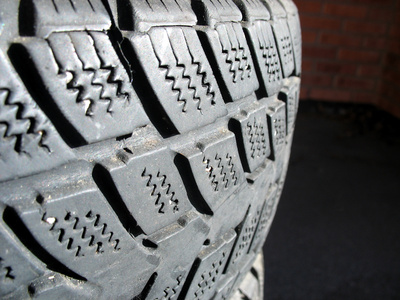
Flotation tires were created in 1960 by an Indiana tire dealer who sought to create a tire that would reduce rutting and soil compaction when used with agricultural equipment. Flotation tires not only affected the tire industry, but also gained popularity among farmers. While the design of these tires is unique, the tires have their own system of measurement, which can be difficult to understand for those who have not encountered flotation sizing before. The sizing is derived from an outdated numeric system which uses inches rather than metric measurements.
Inspect your existing flotation tires and farm equipment, if possible. If you are replacing old tires, the information on the tire will help you select new tires. Some information, such as load ratings, can be found only on the equipment itself or in the owner's manual and is essential in choosing the proper replacement tires.
Consult the sidewall of the tire to gather basic information. There are a series of numbers and letters on the side of any tire which will provide information such as size and weight limit. Use the following example of the letters found on the sidewall of flotation tires as a guide: 30x9.50R15LTC. The first number, 30, is the height of the tire in inches. On occasion, this number may vary from the actual height, so you may want to measure the tires yourself before you purchase new tires. The second number, 9.50, is the width, in inches, from sidewall to sidewall. In this case, the tire would be 9.5 inches wide. In some cases, the decimal point is removed from the width measurement.
The “R” stands for radial and indicates the construction of the tire. The next number, 15, is the diameter of the wheel in inches. “LT” stands for light truck, and is listed after the wheel diameter only on flotation tires. “C” is the load range and indicates the number of layers or plies used in the tire's construction. Most tires have four plies, but “C” tires have six, “D” tires have eight and “E” tires have 10 plies. The more plies a tire has, the stronger it is and the greater its air pressure capacity. Though not included in this example, the weight limit, in pounds, is included on the sidewall of all flotation tires as well.